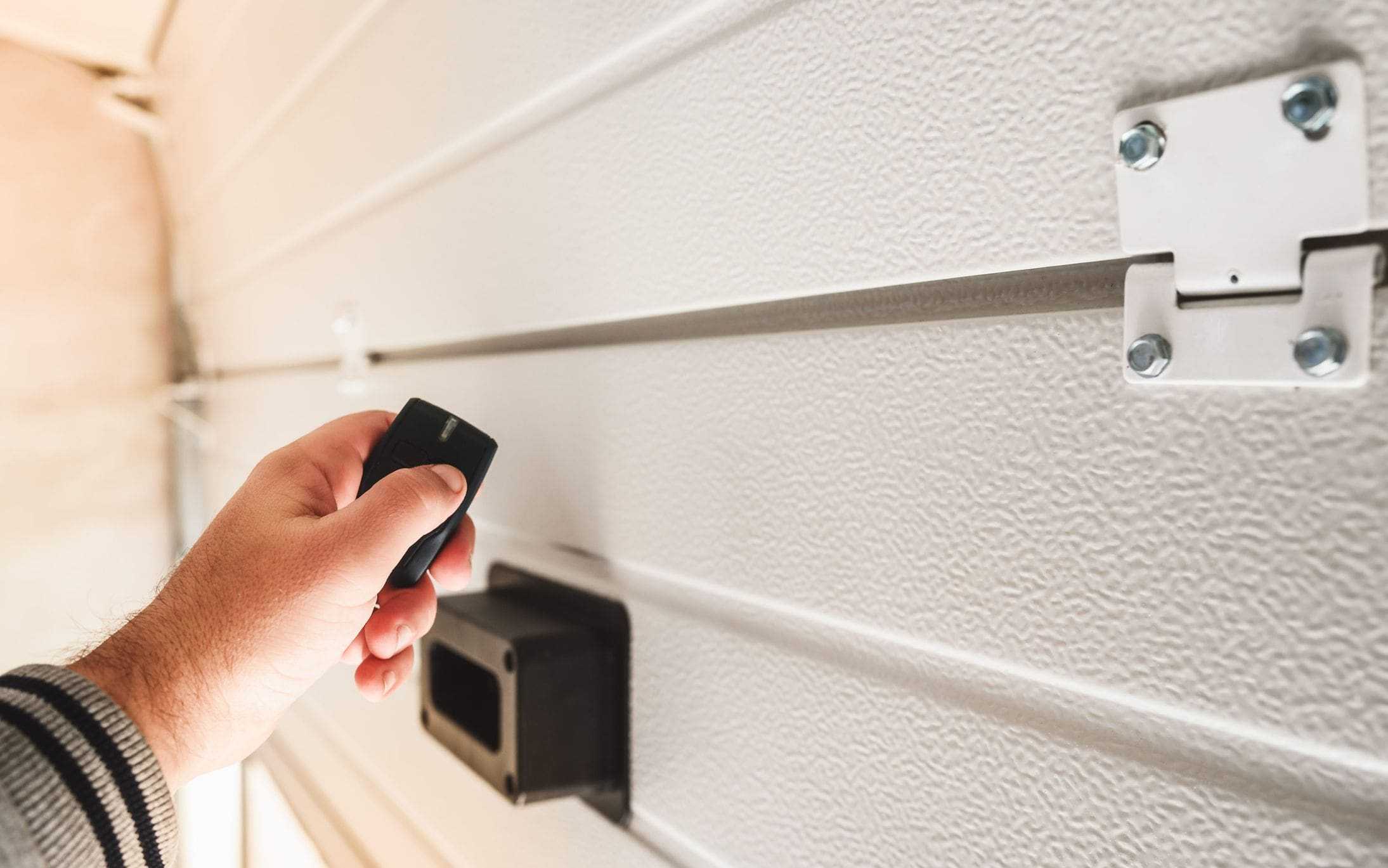

Articles
How Does Garage Door Remote Work
Modified: August 17, 2024
Discover how garage door remotes work with this informative article. Explore the key components and learn how to troubleshoot common issues.
(Many of the links in this article redirect to a specific reviewed product. Your purchase of these products through affiliate links helps to generate commission for Storables.com, at no extra cost. Learn more)
Introduction
A garage door remote is a convenient and essential device that allows you to open and close your garage door with a simple push of a button. It eliminates the need to manually operate the door, providing convenience, safety, and security. But have you ever wondered how this fascinating piece of technology actually works?
In this article, we will delve into the inner workings of a garage door remote and explore the components that make it function seamlessly. We will also discuss the process of how it sends and receives signals to operate your garage door effectively. So, let’s dive in and discover the fascinating world of garage door remotes!
Key Takeaways:
- Garage door remotes function through a combination of transmitter, receiver, and motor activation, utilizing radio waves and coding systems to provide seamless and secure control of garage doors.
- Safety and security features, such as rolling code technology and safety sensors, are integral to garage door remotes, ensuring protection against accidents and unauthorized access while enhancing peace of mind for homeowners.
Read more: How Does A Garage Door Spring Work
Components of a Garage Door Remote
A garage door remote consists of two main components: the transmitter and the receiver. Each component plays a crucial role in the functioning of the remote.
The transmitter is the handheld device that you carry with you, usually attached to your car’s visor or kept in your pocket. It is equipped with buttons that allow you to control the garage door. When you press a button on the transmitter, it sends a signal in the form of radio waves.
The receiver, on the other hand, is located near the garage door opener motor. It receives the signals transmitted by the remote and interprets them to activate specific actions, such as opening or closing the garage door. The receiver is usually connected to the motor through wiring.
Aside from the transmitter and receiver, other key components include the radio frequency technology used in communication, the coding system that enables secure and efficient operation, and additional safety and security features to protect against unauthorized access.
Now that we have a basic understanding of the components, let’s take a closer look at how the transmitter and receiver work together to control your garage door.
Transmitter
The transmitter is the handheld device that you use to control your garage door remotely. It typically consists of a small circuit board housed in a plastic shell, with buttons that correspond to different functions, such as opening, closing, and stopping the garage door.
The transmitter operates using a small battery, usually a coin cell or AAA battery, which provides power to the circuit board. When you press a button on the transmitter, it completes an electrical circuit, activating the transmitter circuit. This, in turn, generates a signal that is transmitted wirelessly as radio waves.
The transmitter utilizes radio frequency (RF) technology to send signals to the receiver. RF waves have the advantage of being able to travel through walls and other objects, making them ideal for remote control applications.
To optimize the range and reliability of the signal, transmitters often have an antenna inside the plastic casing. The antenna helps to amplify and direct the radio wave signal, ensuring that it reaches the receiver with sufficient strength.
One important feature of the transmitter is the coding system. Most modern garage door remotes use rolling code technology to enhance security. Rolling code means that each time you press a button on the transmitter, it sends a unique code that changes with every use. This dynamic coding prevents unauthorized individuals from intercepting and replicating the code to gain access to your garage.
Overall, the transmitter of a garage door remote is a small but powerful device that enables you to wirelessly control your garage door from a distance. Its circuitry, radio frequency technology, and coding system work together seamlessly to ensure smooth and secure communication with the receiver.
Receiver
The receiver is a vital component of the garage door remote system, responsible for receiving and interpreting the signals transmitted by the remote’s transmitter. Without the receiver, the remote’s commands would not be recognized, and the garage door would not respond.
The receiver is typically located near the motor of the garage door opener. It is connected to the motor through wiring, allowing it to communicate and control the operation of the door. The receiver receives the radio wave signals transmitted by the remote’s transmitter.
Once the receiver receives the signal, it decodes the encoded information within the signal to determine the action to be taken. For example, if you press the “open” button on the remote, the receiver will interpret the signal and trigger the motor to open the garage door.
The decoding process within the receiver involves comparing the received code with the programmed code stored in its memory. This ensures that only valid and authorized codes are accepted, providing an additional layer of security against unauthorized access.
Additionally, the receiver may also have safety features built-in to prevent accidents or damage. For instance, some receivers are equipped with sensors that detect obstructions along the path of the garage door. If an obstruction is detected, the receiver will prevent the door from closing fully, ensuring the safety of people or objects in its path.
Modern receivers often have the capability to handle multiple transmitters. This allows you to have several remotes programmed to operate the same garage door opener. It can be useful for households with multiple family members or for situations where additional remotes are needed, such as for guests or caregivers.
Overall, the receiver component of a garage door remote is responsible for receiving and interpreting the signals transmitted by the remote’s transmitter. Its ability to decode and execute commands, along with additional safety features, ensures the smooth and secure operation of your garage door.
Frequency and Codes
When it comes to garage door remotes, frequency and codes play a crucial role in ensuring reliable and secure operation. Let’s explore how these aspects work together to control your garage door.
The frequency refers to the radio wave frequency used by the transmitter to transmit signals to the receiver. It is important that the transmitter and receiver operate on the same frequency for effective communication. Common frequencies used for garage door remotes include 315 MHz and 390 MHz.
In addition to frequency, the coding system used by the remote and receiver adds an extra layer of security. There are primarily two types of coding systems: fixed code and rolling code.
A fixed code system uses a fixed sequence of binary digits to transmit the signal. This means that every time you press a button on the remote, it sends the same code. While fixed codes are simple and reliable, they are less secure as potential intruders can capture and duplicate the code to gain unauthorized access to your garage.
On the other hand, a rolling code system provides enhanced security. Each time you press a button on the remote, the rolling code technology generates a new code, making it nearly impossible to duplicate and gain access to your garage. The receiver and transmitter are synchronized so that they both know the current code. The receiver will only respond to the next valid code in the sequence, rejecting any previously used codes.
The rolling code system provides peace of mind by significantly reducing the risk of unauthorized access to your garage. It ensures that even if someone manages to intercept the transmitted code, they cannot use it to open your garage door in the future.
Furthermore, some garage door remotes offer additional advanced security features, such as encryption, which further protects the transmitted signals from being intercepted and deciphered by unauthorized individuals.
By employing the right frequency and coding system, garage door remotes maintain a secure and reliable communication channel with the receiver, allowing you to control your garage door with peace of mind.
Read more: How Do Garage Door Sensors Work
How a Garage Door Remote Works
Now that we have explored the components of a garage door remote and the importance of frequency and codes, let’s dive into how these elements work together to operate your garage door seamlessly.
When you press a button on the remote’s transmitter, the circuit completes, and a signal is sent in the form of radio waves. These radio waves travel through the air and reach the receiver, which is connected to the garage door opener motor.
Upon receiving the signal, the receiver decodes the information within the signal, verifying its authenticity and determining the action to be taken. If the code is valid and matches the programmed code stored in the receiver’s memory, the receiver activates the motor to initiate the desired action.
If you pressed the “open” button, for example, the motor will start running, and the garage door will begin to open. Similarly, if you pressed the “close” button, the motor will activate in the opposite direction to close the garage door.
During the operation, the receiver continuously communicates with the motor, ensuring that it operates smoothly and stops when necessary. For instance, if an obstruction is detected along the garage door’s path, safety sensors will signal the receiver to halt the motor’s operation, preventing any accidents or damage.
The signals transmitted by the garage door remote are quick and efficient, allowing you to control your garage door from a convenient distance. Whether you are inside your car or approaching your home on foot, the remote gives you the power to open or close the garage door with ease.
It is important to note that different models of garage door remotes may have variations in their specific components and operation. However, the fundamental principles of transmitting signals via radio waves, decoding codes, and activating the motor remain consistent across most garage door remote systems.
Overall, a garage door remote functions as an effective and convenient tool to control the operation of your garage door. It brings convenience, safety, and security to your daily life by allowing you to effortlessly open and close your garage door with just the push of a button.
When using a garage door remote, make sure to keep the batteries fresh and the remote clean to ensure a strong signal and reliable operation.
Pressing the Button
One of the simplest yet most crucial steps in operating a garage door remote is pressing the button. When you press a button on the remote, it sets a chain of events in motion that ultimately leads to the movement of your garage door.
Each button on the remote is associated with a specific function, such as opening, closing, or stopping the garage door. When you press the desired button, whether it’s the “open” button to raise the door or the “close” button to lower it, you are initiating the process of controlling the garage door.
The act of pressing the button completes an electrical circuit within the remote’s transmitter. This circuit completion signals to the remote’s internal components that you want to send a command to the receiver.
Modern garage door remotes are equipped with microprocessors that capture the button press and generate the corresponding signal. These microprocessors are programmed to encode the signal using the specific coding system discussed earlier, such as a rolling code system.
The transmission process begins as the encoder within the transmitter’s circuitry converts the command into a digital signal. This digital signal is then modulated onto a carrier frequency, typically in the range of 315 MHz or 390 MHz, depending on the remote’s configuration.
Once the digital signal is modulated onto the carrier frequency, it is ready to be transmitted as radio waves to the receiver. The pressed button serves as the trigger for the transmitter to initiate the transmission of the encoded signal.
It’s important to note that the distance within which the remote’s signal can effectively reach the receiver can vary based on factors such as the strength of the transmitter and potential interference. However, most garage door remotes are designed to work within a range of 100-200 feet, providing adequate coverage for most residential applications.
In the next steps of the garage door remote’s operation, the transmitted signal travels through the air and reaches the receiver, which then decodes and interprets the signal to initiate the appropriate action.
Overall, pressing the button on the garage door remote is the initial and essential step that triggers the transmission of the encoded signal. It sets in motion a communication process between the remote and the receiver, allowing you to control your garage door with ease and convenience.
Transmitting the Signal
After you press the button on your garage door remote, the next step in the process is the transmission of the signal. This step involves the conversion and delivery of the encoded signal to the receiver, which is responsible for receiving and interpreting the signal to activate the desired action.
Once the button is pressed, the transmitter’s circuitry springs into action. It takes the digital signal that was encoded and modulates it onto a specific carrier frequency, typically in the range of 315 MHz or 390 MHz.
The modulation process involves combining the encoded digital signal with the carrier frequency, forming a new signal that can travel wirelessly through the air as radio waves.
The newly formed signal, carrying the encoded information, is then transmitted from the transmitter’s antenna. The antenna serves as a conduit, amplifying and directing the radio waves to achieve optimal transmission efficiency.
As the radio waves propagate through the air, they spread out in every direction from the transmitter. The strength and range of the signal depend on factors such as the power of the transmitter and potential interference from other electronic devices.
It’s important to mention that obstacles such as walls, doors, and other structures may attenuate or weaken the signal. However, modern garage door remotes are designed to compensate for these potential obstacles by utilizing signals with enough power to penetrate through most residential structures.
Once the signal is transmitted, it travels through the air until it reaches the receiver, which is in close proximity to the garage door opener motor. The receiver is responsible for receiving the signal and interpreting the encoded information to initiate the appropriate action.
Overall, the transmission of the signal is a critical step in the garage door remote’s operation. It involves the modulation and wireless delivery of the encoded signal from the transmitter to the receiver, setting the stage for the receiver to receive and interpret the signal to activate the necessary action on the garage door opener.
Receiving the Signal
Once the signal is transmitted by the garage door remote’s transmitter, the receiver, located near the garage door opener motor, plays a crucial role in receiving and interpreting the signal. The receiver’s primary task is to decode the transmitted signal and initiate the appropriate action to operate the garage door.
As the radio waves carrying the transmitted signal propagate through the air, they eventually reach the receiver’s antenna. The antenna, positioned to optimize signal reception, captures the radio waves and directs them to the receiver’s internal circuitry.
Within the receiver, specialized circuitry processes the received signal. This circuitry includes a demodulator that separates the transmitted signal from the carrier frequency, extracting the encoded information that was modulated onto the signal.
Once the encoded information is extracted, the receiver begins the decoding process. The receiver plays a vital role in ensuring security and preventing unauthorized access by comparing the received code with the codes stored in its memory.
If the received code matches a valid code programmed into the receiver, the receiver verifies its authenticity and determines the appropriate action to be taken. For example, if you pressed the “open” button on the remote, the receiver recognizes the corresponding code and initiates the motor to open the garage door.
On the other hand, if the received code does not match any valid code, the receiver disregards the signal and takes no action. This feature provides an essential layer of security, as it ensures that only authorized codes can control the operation of the garage door.
In addition to decoding and verifying the code, the receiver may also incorporate safety features. For instance, if the garage door is equipped with safety sensors, the receiver continuously monitors these sensors to detect any obstructions in the door’s path. If an obstruction is detected, the receiver will prevent the motor from operating, ensuring the safety of people and objects.
Overall, the role of the receiver in the garage door remote system is crucial. It receives the transmitted signal, decodes the encoded information, verifies its authenticity, and activates the motor or safety features accordingly. Through this process, the receiver translates the commands from the remote into actions that control the operation of the garage door.
Read more: How Does A Garage Door Lock Work
Motor Activation
Once the receiver has received and decoded the signal from the garage door remote, the next step in the process is motor activation. The motor is responsible for physically moving the garage door in response to the commands received from the remote.
Upon receiving a valid signal from the receiver, the motor’s circuitry and mechanisms are activated. The precise mechanics of motor activation can vary depending on the specific type and design of the garage door opener.
Typically, the motor is equipped with a series of gears and drive mechanisms that translate the electrical signals into mechanical motion. These mechanisms, often referred to as the drive mechanism, include items such as chains, belts, or screw drives.
When the motor is activated, it engages with the drive mechanism and starts rotating. This rotational motion is then transferred to various components of the garage door system, such as the pulleys and springs, which work in harmony to raise or lower the garage door.
If the remote command is to open the garage door, the motor’s rotational motion is transmitted to the drive mechanism, causing the garage door to move upward. Conversely, if the command is to close the garage door, the motor’s rotation is reversed, resulting in the downward movement of the door.
It’s worth noting that modern garage door opener motors often include additional features to enhance efficiency and safety. For instance, some motors are equipped with sensors that can detect obstacles or obstructions in the path of the closing door. If an obstruction is detected, the motor will automatically stop or reverse the door’s motion to prevent damage or injury.
Mechanisms such as limit switches are also utilized to ensure precise control of the garage door’s movement. These switches are positioned to set the upper and lower limits of the door’s travel, allowing the motor to stop once it reaches the specified limits.
Overall, motor activation is the critical step that translates the electrical signals received from the remote into mechanical motion. By engaging with the drive mechanism, the motor powers the movement of the garage door, allowing it to open or close in response to your commands.
Safety and Security Features
Garage door remotes and opener systems are designed with several built-in safety and security features to ensure the protection of people and property. These features help prevent accidents, unauthorized access, and damage to the garage door or surrounding areas.
One common safety feature is the use of safety sensors or photoelectric eyes. These sensors are typically installed near the bottom of the garage door tracks and emit an invisible beam of light across the door’s path. If this beam of light is interrupted while the door is closing, it signals the opener to reverse the door’s movement. This prevents the door from closing on people, pets, or objects beneath it.
Some newer garage door opener systems also incorporate rolling code technology to enhance security. Rolling code technology ensures that each time the remote button is pressed, a new and unique code is generated. This dynamic code prevents unauthorized individuals from intercepting and replaying the code to gain access to the garage. It significantly reduces the risk of remote code theft.
In addition to rolling code technology, encrypted signals can also be used to further enhance security. Encryption adds an extra layer of protection by encoding the transmitted signal, making it more difficult for potential intruders to intercept and decipher the code.
Another security feature commonly found in garage door opener systems is the ability to lock the remote controls. This feature allows homeowners to disable the operation of the remotes temporarily. It is particularly useful when homeowners are away for an extended period or want to prevent unauthorized use of the remotes.
Some garage door opener systems also come with a manual release mechanism. In case of a power outage or emergency situation, this mechanism allows the garage door to be manually opened or closed. It provides an alternative method of accessing or securing the garage.
Moreover, manufacturers are continuously improving and developing safety features to keep up with industry standards and regulations. It’s essential to follow the recommended maintenance and inspection guidelines for your garage door and opener system to ensure that all safety features are functioning correctly.
Overall, safety and security are paramount when it comes to garage door remotes and opener systems. The incorporation of safety sensors, rolling code technology, encryption, remote lockout features, and manual release mechanisms all contribute to a safer and more secure operation of garage doors, providing peace of mind to homeowners and users.
Conclusion
Garage door remotes have revolutionized the way we interact with our garage doors, providing convenience, safety, and security. Understanding how these devices work can give us a greater appreciation for the technology and engineering behind them.
From the components of a garage door remote, including the transmitter and receiver, to the use of radio waves and coding systems, the remote allows us to control the operation of our garage doors with a simple press of a button. The transmission and reception of signals, along with the activation of the motor, work seamlessly together to open and close the garage door smoothly and efficiently.
Safety and security features integrated into garage door remote systems, such as safety sensors, rolling code technology, and encryption, ensure the protection of people and property. These features prevent accidents and unauthorized access, providing a sense of peace and assurance to homeowners.
It’s important to remember to follow proper maintenance guidelines for your garage door and opener system to ensure that all safety features are functioning correctly. Regular inspections and testing can help identify any issues or concerns that need to be addressed promptly.
In conclusion, garage door remotes have transformed the way we interact with our garage doors, making our lives more convenient and secure. With their wireless capabilities, advanced technology, and safety features, these devices have become an integral part of our daily routines. Whether it’s entering or leaving our homes, controlling access to the garage, or improving overall convenience, garage door remotes have truly simplified our lives.
Frequently Asked Questions about How Does Garage Door Remote Work
Was this page helpful?
At Storables.com, we guarantee accurate and reliable information. Our content, validated by Expert Board Contributors, is crafted following stringent Editorial Policies. We're committed to providing you with well-researched, expert-backed insights for all your informational needs.
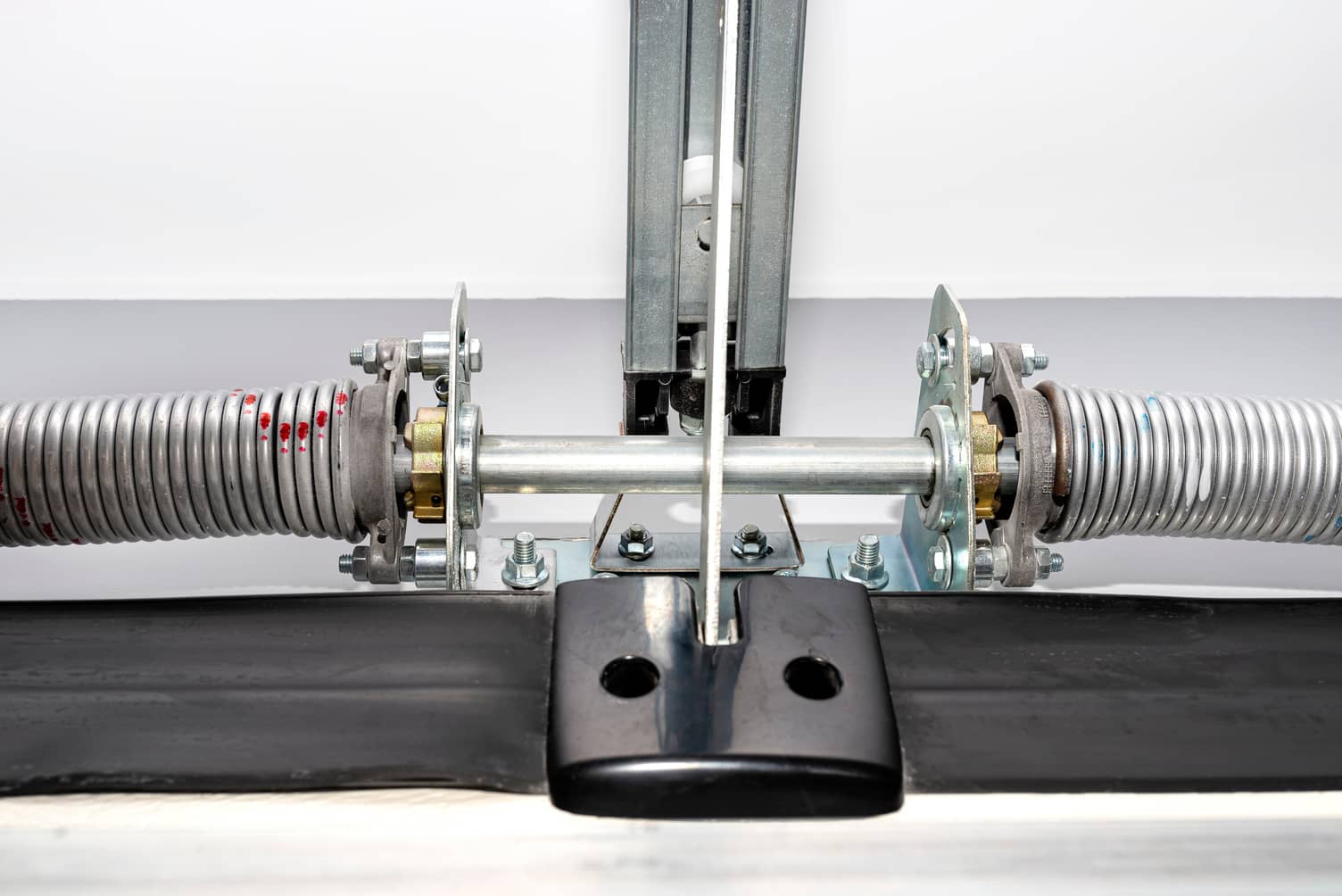


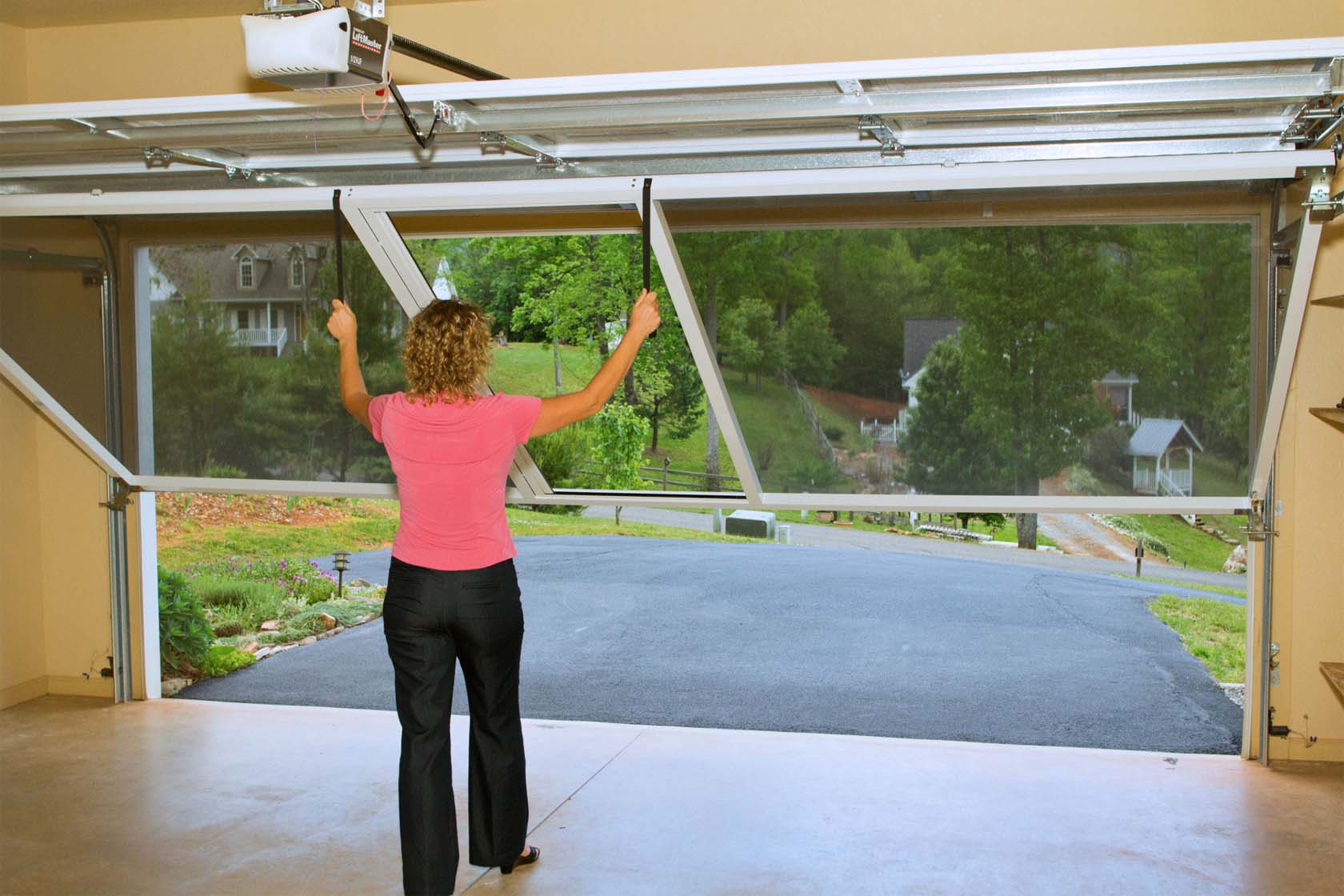
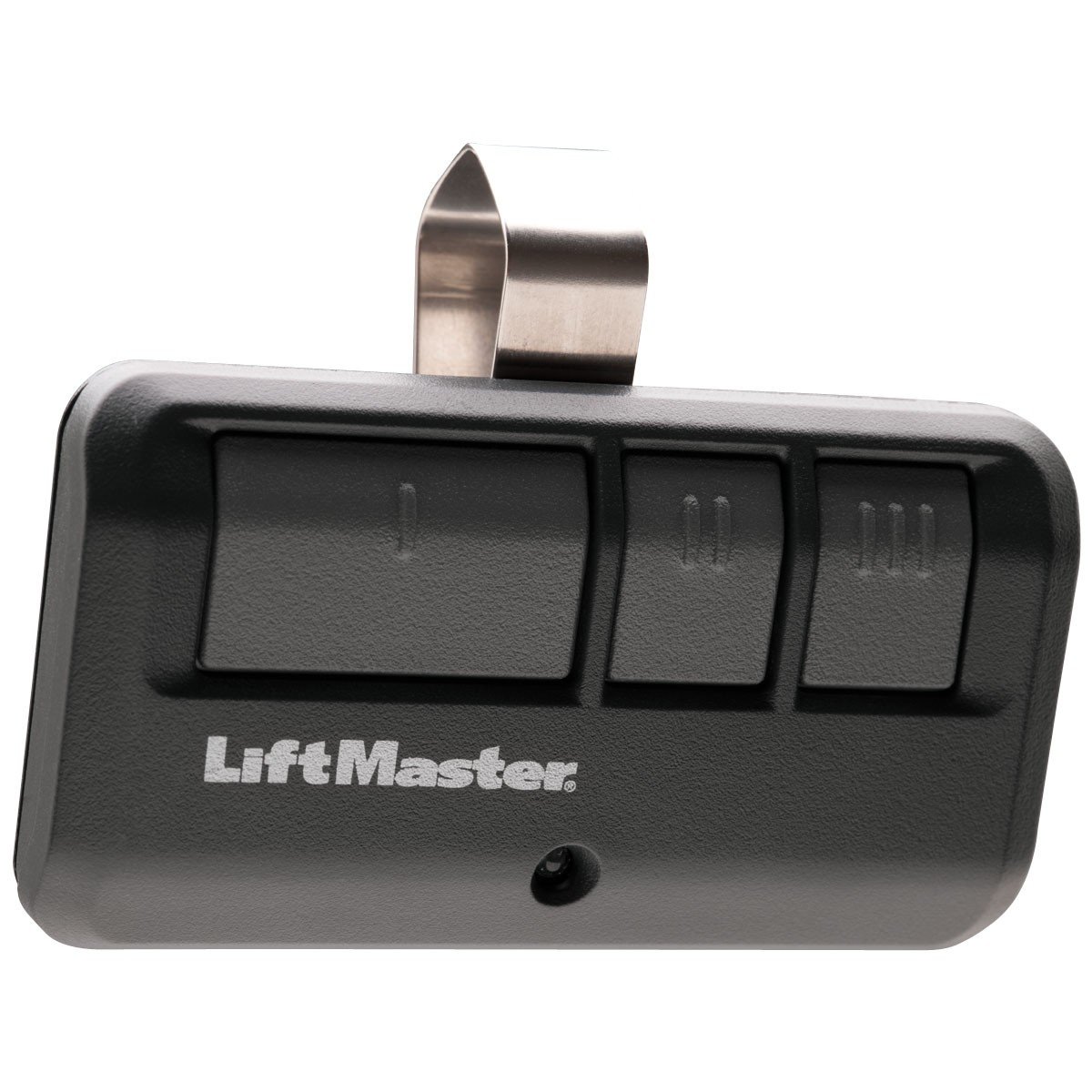
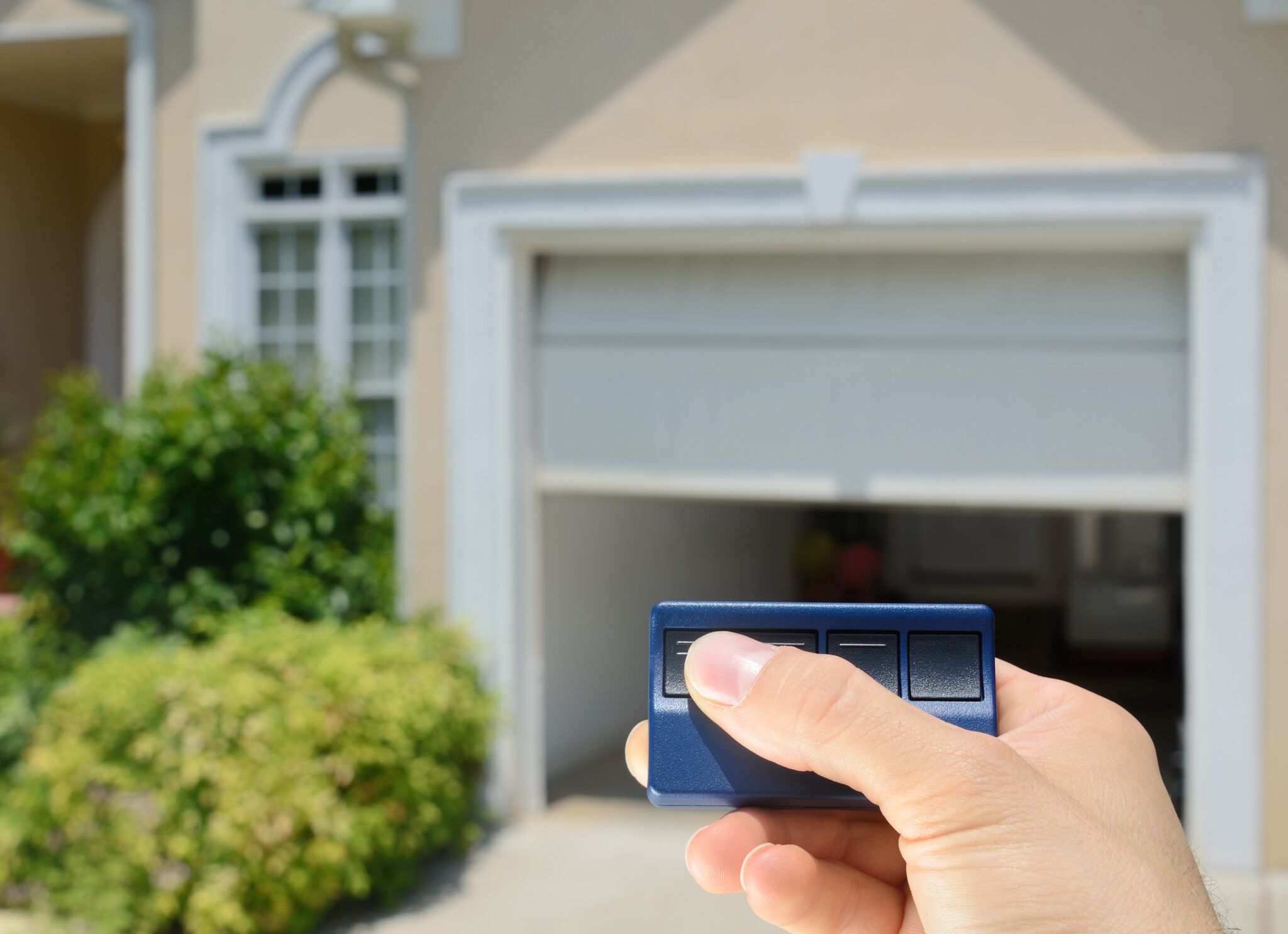
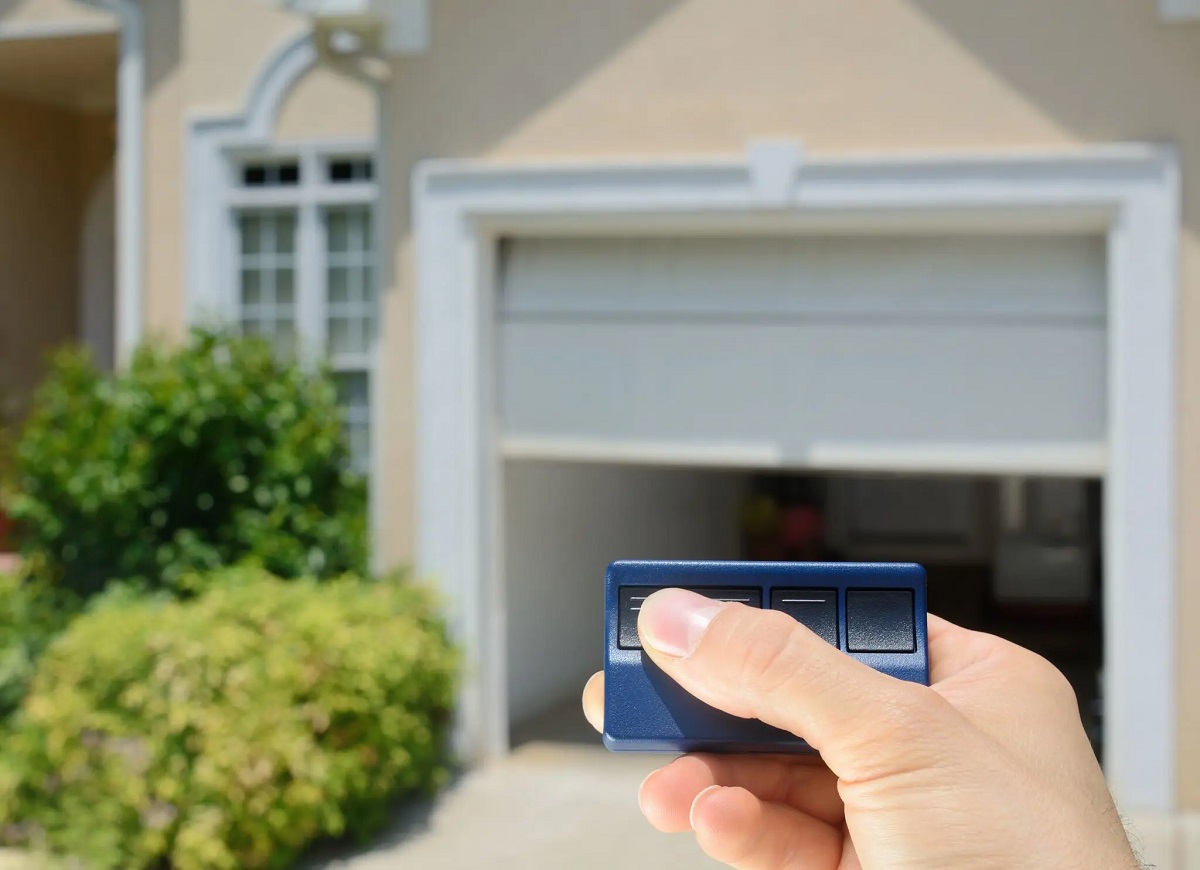



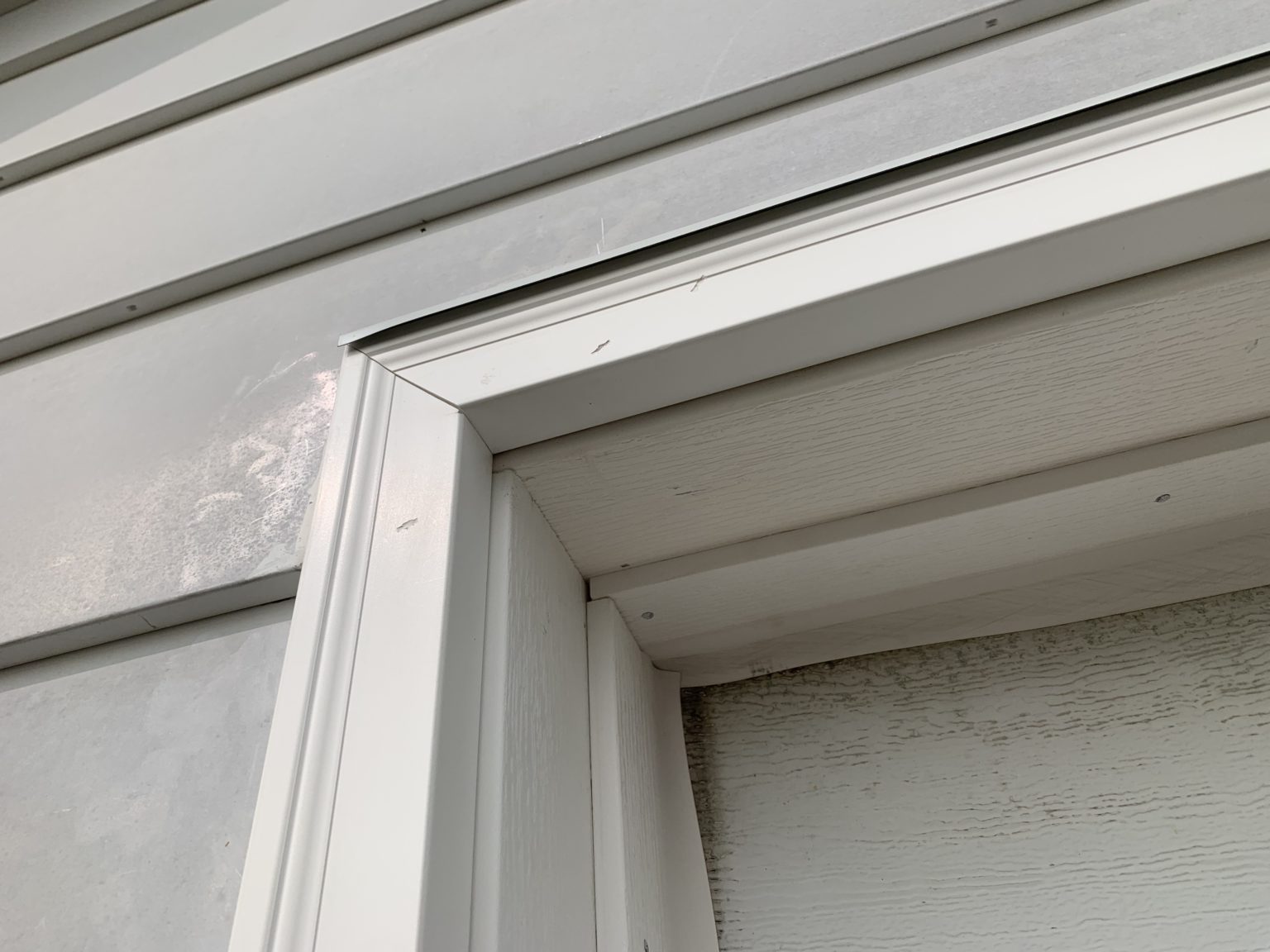
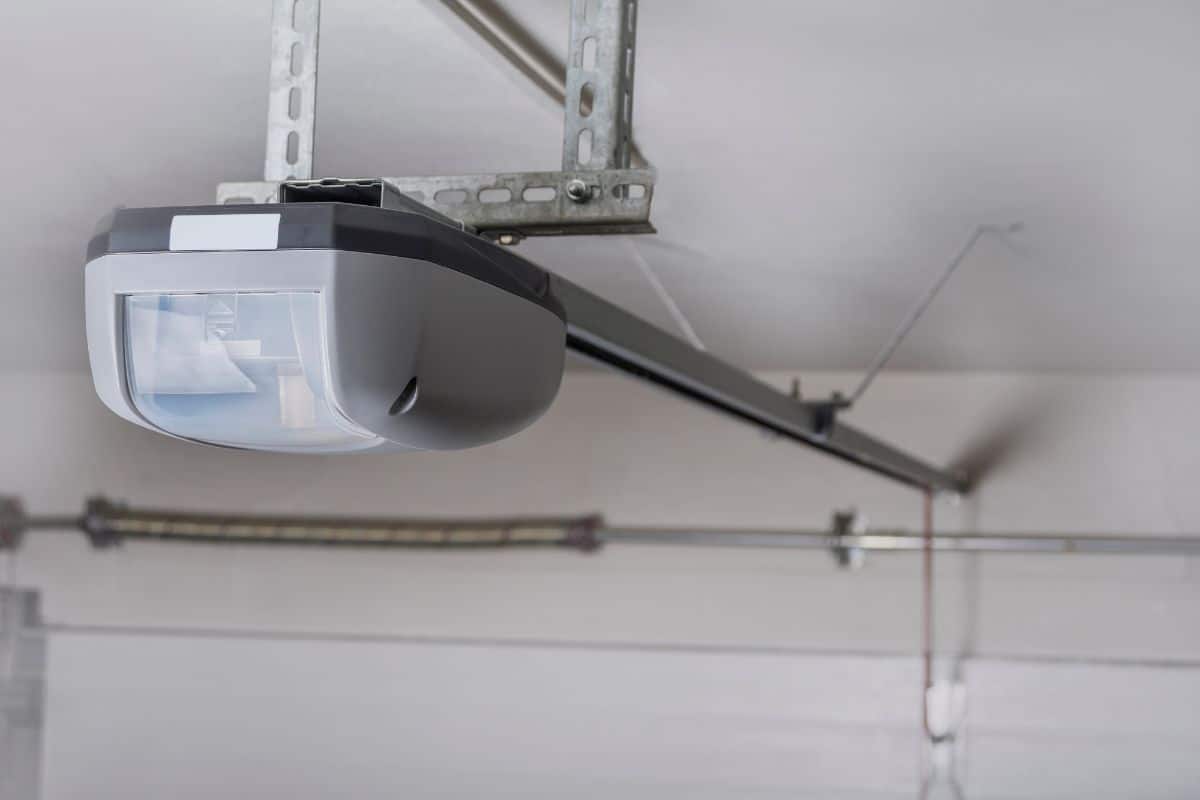


0 thoughts on “How Does Garage Door Remote Work”